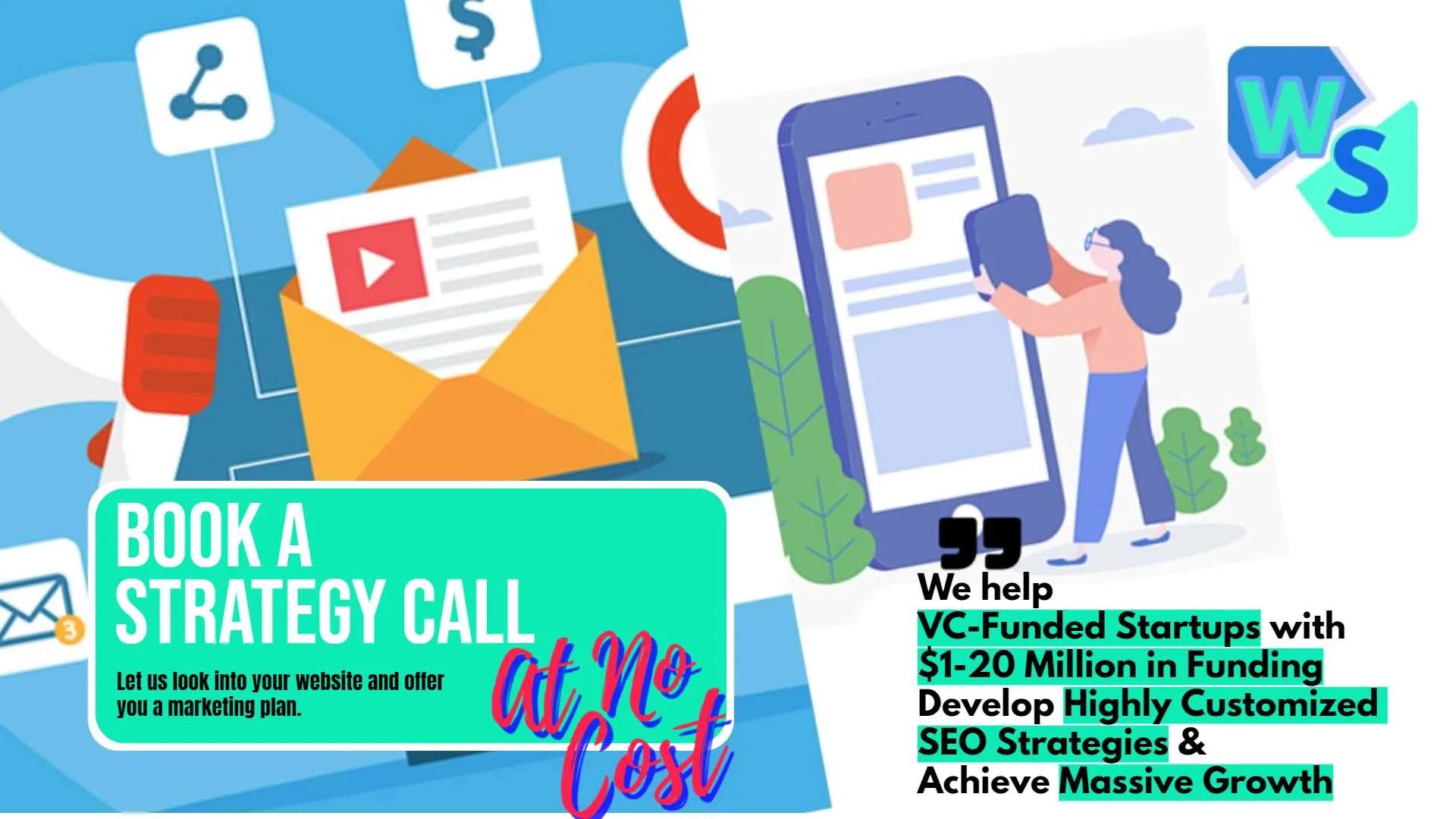In today’s fast-paced world, businesses are constantly looking for ways to stand out and increase sales. Marketing plays a crucial role in this endeavor. Whether you’re a small business owner or managing a large corporation, having effective marketing strategies is key to driving sales and ensuring long-term success. This article will explore some of the top marketing ideas that can help you boost your sales, engage with your audience, and ultimately grow your business. Let’s dive in and discover how you can take your marketing efforts to the next level.
Understanding Your Audience
Deepening Customer Personas
To truly understand your audience, go beyond basic demographics and develop detailed customer personas. These personas should encompass not only the age, gender, and income level but also the psychological and emotional traits of your ideal customers. Consider their lifestyle choices, personal values, and motivations.
What are their daily challenges? What aspirations drive them? Dive into their social media behavior to see what content they engage with, who they follow, and what issues they care about. This depth of understanding will allow you to create marketing messages that resonate on a deeper emotional level, fostering stronger connections and loyalty.
Building Customer Journey Maps
Creating customer journey maps is a powerful way to visualize and understand the various stages a customer goes through from awareness to purchase and beyond. Identify key touchpoints where customers interact with your brand, such as social media, your website, email communications, and customer service.
Map out the emotional and cognitive experiences at each stage. This strategic tool helps you pinpoint opportunities to enhance the customer experience, address pain points more effectively, and create targeted content that guides your customers smoothly through their journey.
Leveraging Behavioral Data
Behavioral data offers a goldmine of insights into how your customers interact with your brand. Track metrics like page views, click-through rates, time spent on different pages, and conversion paths. Use tools like Google Analytics and CRM software to gather and analyze this data.
By understanding what content, products, or services attract the most attention, you can tailor your marketing strategies to highlight these areas. Behavioral data also helps you identify patterns, such as peak buying times, preferred communication channels, and common barriers to purchase, enabling you to refine your approach for better results.
Engaging in Social Listening
Social listening involves monitoring online conversations on social media platforms, forums, blogs, and review sites to understand what people are saying about your brand, your competitors, and your industry. Use tools like Hootsuite, Brandwatch, or Sprout Social to track mentions, sentiment, and trends. This real-time feedback provides invaluable insights into customer opinions, emerging trends, and potential issues before they escalate.
Engage with your audience by addressing their concerns, answering questions, and participating in relevant discussions. This proactive approach not only improves your brand’s reputation but also helps you stay ahead of the curve.
Conducting Qualitative Research
Quantitative data provides hard numbers, but qualitative research offers deeper insights into customer motivations and attitudes. Conduct in-depth interviews, focus groups, and ethnographic studies to gather rich, narrative data. Ask open-ended questions that allow customers to express their thoughts and feelings freely.
This type of research helps you uncover the underlying reasons behind customer behaviors, which can be more telling than what the numbers alone reveal. Use these insights to craft more compelling stories and messages that resonate with your audience on a personal level.
Continuous Feedback Loop
Creating a continuous feedback loop is essential for keeping your understanding of your audience up to date. Regularly solicit feedback through surveys, polls, and direct customer interactions. Implement mechanisms for customers to provide feedback at various touchpoints, such as after a purchase, following customer service interactions, or through periodic email surveys.
Analyze this feedback to identify patterns and trends, and be agile in adapting your marketing strategies based on these insights. Show your customers that their opinions matter by acting on their feedback and communicating the changes you’ve made as a result.
Personalizing Customer Experience
Personalization goes beyond addressing customers by their names. Use the data you’ve gathered to offer personalized recommendations, content, and experiences. Segment your email lists based on customer behavior and preferences, and send tailored messages that cater to individual needs.
Implement dynamic content on your website that changes based on the visitor’s previous interactions or known preferences. Personalized experiences make customers feel valued and understood, increasing their likelihood of making a purchase and remaining loyal to your brand.
Emotional Connection and Brand Loyalty
Building an emotional connection with your audience can transform casual buyers into loyal advocates. Share your brand’s story, values, and mission in a way that resonates with your customers’ own values and beliefs. Highlight customer success stories and testimonials that showcase how your products or services have made a difference in their lives.
Engage in community-building activities, such as hosting events, participating in social causes, or creating exclusive online groups for your customers. These efforts foster a sense of belonging and loyalty that goes beyond transactional relationships.
Creating Compelling Content

Developing a Content Strategy
A well-defined content strategy is crucial for creating compelling content that drives sales. Start by setting clear goals for your content. Determine what you want to achieve, whether it’s increasing brand awareness, driving traffic, generating leads, or boosting sales.
Align your content goals with your overall business objectives. Create a content calendar that outlines what content will be published, when, and on which platforms. This helps ensure consistency and allows you to plan ahead for seasonal trends, product launches, or promotional campaigns.
Crafting High-Value Content
High-value content provides real value to your audience, addressing their needs, solving their problems, or answering their questions. Focus on creating content that is educational, informative, or entertaining. This can include in-depth blog posts, how-to guides, case studies, whitepapers, and eBooks.
Ensure that your content is well-researched and backed by credible sources. High-value content establishes your brand as an authority in your industry, builds trust with your audience, and encourages them to return for more.
Incorporating User Intent
Understanding and addressing user intent is key to creating content that resonates with your audience. User intent refers to the purpose behind a user’s search query. Are they looking for information, seeking to make a purchase, or trying to find a specific website? Tailor your content to match the different types of user intent.
For informational intent, provide detailed and informative content. For transactional intent, create content that highlights your products’ features, benefits, and unique selling points. By aligning your content with user intent, you can meet your audience’s needs more effectively and guide them through the buying journey.
Using Data-Driven Content Creation
Leverage data and analytics to inform your content creation process. Analyze your website traffic, social media engagement, and other key metrics to identify what types of content perform best. Look at which topics, formats, and headlines generate the most interest and engagement.
Use this data to refine your content strategy and focus on creating more of what works. Additionally, use keyword research tools to identify high-traffic keywords and trending topics in your industry. This ensures that your content is relevant, timely, and optimized for search engines.
Creating Evergreen Content
Evergreen content is content that remains relevant and valuable over time. Unlike time-sensitive content, which may lose its relevance quickly, evergreen content continues to attract traffic and generate leads long after it’s published.
Examples of evergreen content include how-to guides, tutorials, and comprehensive resources on fundamental topics in your industry. Investing in evergreen content can provide long-term benefits, driving consistent traffic and engagement to your website.
Engaging Visual and Interactive Content
Incorporating visual and interactive elements can make your content more engaging and memorable. Use high-quality images, infographics, videos, and interactive tools to capture your audience’s attention and enhance their experience.
Interactive content, such as quizzes, calculators, and interactive infographics, can increase engagement and encourage users to spend more time on your site. Visual content is also more likely to be shared on social media, increasing your reach and visibility.
Repurposing Content
Maximize the value of your content by repurposing it across different formats and platforms. For example, turn a blog post into a video, an infographic, or a series of social media posts. Repurposing content allows you to reach different segments of your audience and extend the lifespan of your content.
It also saves time and resources, as you can leverage existing content to create new pieces without starting from scratch. Ensure that each repurposed piece is tailored to the platform and audience you are targeting.
Utilizing Content Marketing Tools
There are numerous tools available to help streamline and enhance your content marketing efforts. Use content management systems (CMS) like WordPress to organize and publish your content efficiently. Employ SEO tools like Ahrefs or SEMrush to optimize your content for search engines.
Social media management tools like Hootsuite or Buffer can help you schedule and track your social media posts. Analytics tools like Google Analytics provide insights into how your content is performing and where improvements can be made. Leveraging these tools can make your content marketing more effective and data-driven.
Building a Content Distribution Plan
Creating great content is only half the battle; you also need a solid distribution plan to ensure your content reaches your target audience. Identify the best channels to distribute your content, whether it’s your website, social media platforms, email newsletters, or third-party websites.
Develop a promotion strategy that includes sharing your content with influencers, participating in relevant online communities, and using paid advertising if necessary. A well-executed distribution plan ensures that your content gets the visibility it deserves and drives traffic, engagement, and sales.
Measuring Content Performance
Regularly measure the performance of your content to understand what works and what doesn’t. Track key metrics such as page views, time on page, bounce rate, social shares, and conversion rates. Use this data to evaluate the effectiveness of your content and make data-driven decisions to improve future content.
A/B testing different headlines, formats, and calls to action can also provide valuable insights into what resonates with your audience. Continuously optimizing your content based on performance data ensures that your content strategy remains effective and aligned with your business goals.
Leveraging Social Media
Building a Strong Social Media Presence
Establishing a strong social media presence begins with creating profiles that reflect your brand’s identity. Ensure your profiles are complete with high-quality images, a compelling bio, and links to your website.
Consistency in branding across all platforms is crucial to build recognition and trust. Post regularly to keep your audience engaged and informed. Each post should align with your brand voice and values, providing a cohesive experience for your followers.
Engaging with Your Audience
Engagement is a two-way street. It’s not just about posting content; it’s about interacting with your audience. Respond to comments and messages promptly to show that you value their input.
Ask open-ended questions to encourage discussions and gather insights about your audience’s preferences and opinions. Host live sessions, such as Q&A or product demonstrations, to connect with your audience in real-time and address their questions and concerns directly.
Utilizing Social Media Analytics
Leverage social media analytics to gain insights into your audience’s behavior and preferences. Tools like Facebook Insights, Twitter Analytics, and Instagram Insights provide data on engagement rates, reach, and audience demographics.
Analyze this data to understand which types of content perform best and at what times your audience is most active. Use these insights to refine your social media strategy, ensuring that you post content that resonates with your audience at optimal times.
Running Targeted Ad Campaigns
Social media advertising offers advanced targeting options that allow you to reach your ideal audience effectively. Platforms like Facebook, Instagram, and LinkedIn provide detailed targeting based on demographics, interests, behaviors, and even life events.
Develop targeted ad campaigns that address specific audience segments with tailored messages and offers. Test different ad creatives, headlines, and calls to action to identify what drives the best results. Monitor your ad performance and adjust your strategies based on the data to maximize your return on investment.
Collaborating with Influencers
Influencer marketing can amplify your reach and build credibility for your brand. Identify influencers who align with your brand values and have an engaged following in your niche. Collaborate with them to create authentic content that showcases your products or services.
This could include sponsored posts, product reviews, or joint giveaways. Ensure that the collaboration feels genuine and mutually beneficial, as authenticity is key to successful influencer marketing.
Creating Shareable Content
The key to viral content is its shareability. Create content that is not only informative or entertaining but also easy for your audience to share with their networks. This can include visually appealing graphics, thought-provoking quotes, or trending topics that encourage discussion. Use compelling headlines and visuals to grab attention and entice users to share your content. The more your content is shared, the greater your reach and visibility.
Implementing Social Commerce
Social commerce integrates e-commerce with social media platforms, making it easier for users to shop directly from your social profiles. Platforms like Instagram and Facebook offer features like shoppable posts and product tags, allowing you to showcase your products and drive sales seamlessly.
Set up a shop on these platforms and tag your products in posts and stories. Ensure a smooth and user-friendly shopping experience by optimizing your product descriptions, images, and checkout process.

Hosting Contests and Giveaways
Contests and giveaways can generate excitement and increase engagement on your social media platforms. Plan contests that require users to like, share, or comment on your posts, or tag friends to enter.
This not only boosts engagement but also expands your reach as participants share your content with their networks. Offer attractive prizes that appeal to your audience and align with your brand. Promote your contests across all your social media channels to maximize participation.
Leveraging User-Generated Content
User-generated content (UGC) is a powerful way to build trust and community around your brand. Encourage your customers to create and share content featuring your products. Highlight this content on your social media profiles, giving credit to the original creators.
UGC serves as social proof, showing potential customers that real people use and love your products. Create campaigns that incentivize users to share their experiences, such as branded hashtags or photo challenges.
Cross-Promoting Across Channels
Maximize your social media efforts by cross-promoting your content across different channels. Share your Instagram posts on Facebook, tweet about your latest blog post, or promote your YouTube videos on LinkedIn.
This ensures that your content reaches a broader audience and increases its visibility. Tailor your cross-promotion strategies to fit the unique features and audience of each platform, ensuring a cohesive and effective approach.
Staying Updated with Trends
Social media is constantly evolving, with new trends and features emerging regularly. Stay updated with the latest trends and incorporate them into your social media strategy.
Follow industry blogs, join relevant groups, and participate in webinars to stay informed. Experiment with new features and formats, such as Instagram Reels, TikTok challenges, or LinkedIn Stories, to keep your content fresh and engaging.
Enhancing Your Online Presence
Optimizing Your Website
Your website is often the first point of contact potential customers have with your brand. Ensuring it is optimized for both user experience and search engines is crucial.
Start by making sure your website is mobile-friendly, as more and more users are browsing on their phones. Speed is also essential; a slow-loading website can turn visitors away. Use tools like Google PageSpeed Insights to analyze and improve your site’s performance.
Implementing SEO Strategies
Search engine optimization (SEO) is key to driving organic traffic to your website. Focus on both on-page and off-page SEO strategies. On-page SEO includes optimizing your website’s content, meta descriptions, headers, and images with relevant keywords.
Off-page SEO involves building high-quality backlinks from reputable websites. Regularly publishing high-quality content, such as blog posts and articles, can also improve your site’s SEO.
Using Email Marketing
Email marketing remains one of the most effective ways to reach and engage with your audience. Build an email list by offering valuable content, discounts, or freebies in exchange for email addresses.
Once you have a list, segment it based on different criteria such as purchase history, interests, or engagement level. Send personalized and relevant emails to each segment, whether it’s a welcome email for new subscribers, a product recommendation, or a special offer.
Investing in Paid Advertising
While organic reach is important, investing in paid advertising can significantly boost your visibility and sales. Platforms like Google Ads, Facebook Ads, and Instagram Ads offer powerful targeting options that allow you to reach your ideal audience.
Start with a clear goal, whether it’s increasing brand awareness, driving traffic, or generating sales, and create compelling ad copy and visuals that align with your objectives. Monitor your ad performance and adjust your strategies based on the data.
Building Strong Customer Relationships
Creating a Personalized Customer Experience
Personalization is essential for building strong customer relationships. Use data to understand your customers’ preferences and behaviors. Implement personalization strategies across all touchpoints.
This can include personalized email campaigns that address customers by name and recommend products based on their purchase history, or personalized website experiences that show content relevant to their interests. Personalization makes customers feel valued and understood, increasing their loyalty and satisfaction.
Offering Exclusive Access and VIP Programs
Create exclusive access and VIP programs to reward your most loyal customers. These programs can offer early access to new products, special discounts, or invitations to exclusive events.
By offering something special, you make your loyal customers feel appreciated and valued, which strengthens their connection to your brand. Promote these programs through targeted marketing campaigns, ensuring that the benefits are clear and appealing.
Building a Community Around Your Brand
Foster a sense of community among your customers by creating spaces where they can connect with each other and with your brand. This can be through online forums, social media groups, or in-person events.
Encourage discussions, share valuable content, and engage with your community regularly. Building a community not only enhances customer loyalty but also provides valuable insights and feedback that can help you improve your products and services.
Implementing a Feedback Loop
Establishing a continuous feedback loop is critical for maintaining strong customer relationships. Regularly solicit feedback through surveys, social media interactions, and direct customer conversations. Use this feedback to identify areas for improvement and to make data-driven decisions.
Show your customers that you value their opinions by acting on their feedback and communicating the changes you have made. This transparency builds trust and demonstrates your commitment to customer satisfaction.
Providing Proactive Customer Support
Proactive customer support can significantly enhance customer relationships. Instead of waiting for customers to reach out with issues, anticipate their needs and address potential problems before they arise.
This can involve sending reminders for product renewals, providing tips for getting the most out of a product, or offering support resources proactively. Proactive support shows customers that you care about their experience and are dedicated to helping them succeed.
Hosting Customer Appreciation Events
Show your appreciation for your customers by hosting events that celebrate their loyalty. These can be in-person events, such as customer appreciation parties, or virtual events, such as webinars or exclusive online meetups.
These events provide an opportunity to engage with your customers on a personal level, show gratitude, and strengthen your relationships. Use these events to gather feedback, share company updates, and offer special deals or previews of new products.
Developing a Customer Loyalty Program
A well-designed customer loyalty program can incentivize repeat purchases and increase customer retention. Offer rewards such as points for every purchase, which can be redeemed for discounts or free products. Provide exclusive perks, such as early access to sales, free shipping, or special gifts on birthdays.
Promote your loyalty program through various marketing channels and make it easy for customers to join and participate. A successful loyalty program not only encourages repeat business but also creates brand advocates who are more likely to recommend your products to others.
Engaging in Social Responsibility

Customers increasingly value brands that are socially responsible. Engage in activities that give back to the community or support causes that align with your brand values. This can include charitable donations, volunteering, or sustainable business practices.
Communicate your social responsibility efforts through your marketing channels, showing customers that your brand is committed to making a positive impact. This not only enhances your brand image but also builds stronger connections with customers who share your values.
Creating Emotional Connections
Building emotional connections with your customers can significantly enhance their loyalty and engagement. Share your brand’s story, mission, and values in a way that resonates with your audience.
Highlight the human side of your business by featuring stories of your employees, customers, or the positive impact your products have made. Emotional connections make your brand more relatable and memorable, encouraging customers to form a deeper bond with your brand.
Continuously Improving the Customer Experience
Never stop looking for ways to improve the customer experience. Regularly review your customer journey and identify areas where you can enhance the experience. This can involve simplifying the checkout process, providing more comprehensive support resources, or offering more personalized interactions.
Stay informed about the latest trends and technologies in customer experience, and be willing to innovate and adapt. A commitment to continuous improvement demonstrates to your customers that you are dedicated to providing the best possible experience.
Conclusion
Building strong customer relationships is an ongoing effort that requires dedication, strategic thinking, and continuous improvement. By understanding your audience, creating compelling content, leveraging social media, and fostering meaningful connections with your customers, you can significantly boost your sales and grow your business.
Each strategy discussed in this article offers actionable advice that startup founders can implement to enhance their marketing efforts and achieve sustainable success. Remember, the key to effective marketing is not just reaching your audience but engaging with them in a way that builds trust, loyalty, and a lasting relationship. Focus on providing value, listening to your customers, and continuously adapting to their needs, and you will see your sales and customer satisfaction soar.
Read Next:
- Top Business Ideas for Starting a Digital Marketing Agency
- How to Create Impactful Marketing Flyers
- Marketing Strategies to Grow Your Chiropractic Practice
- Black Friday Marketing Strategies to Maximize Sales
- Best Swag Ideas to Promote Your Brand





















Comments are closed.